
July
2020 |
 |
|
|

Those Volunteer Ambulance Drivers
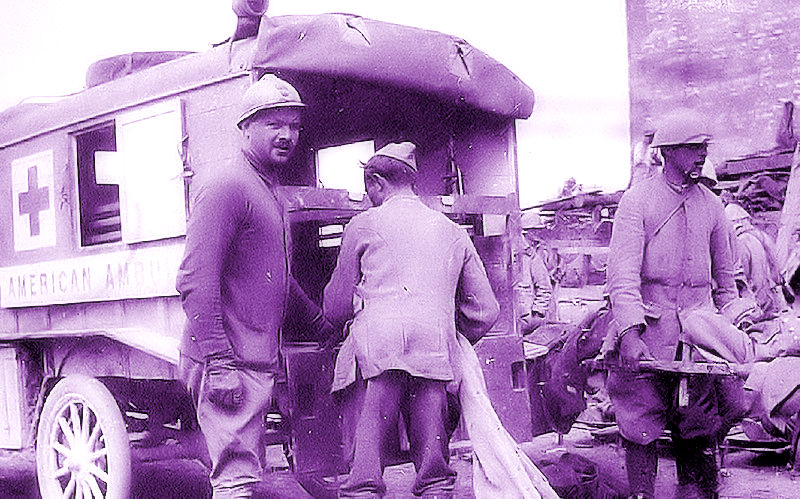
American Field Service Ambulance, Verdun Sector

While the United States remained a neutral power up to April 1917, American volunteers
contributed a total of over 3,500 personnel to ambulance work between 1914 and 1917,
primarily serving with the French Army. Three principal ambulance corps were involved: the
American Field Service, the Harjes Formation, and the "Anglo-American" Corps, as well as a number of smaller units. Around one third went on to serve in the American Expeditionary Force and other Allied armies and air services. By the way, it's probably no accident that America's Last Doughboy was an ambulance driver. Seventeen-year-old Frank Buckles wanted to get Over There to see the Big Show. He asked around and discovered the fastest way to get to France was to enlist as an ambulance driver, so he lied about his age and enlisted in the U.S. Army Ambulance Service. And, indeed, he got Over There, later to become an outstanding representative of his generation.
Our principal contributor to the story of the volunteer ambulance drivers is British journalist and author Patrick Gregory, who has been a past contributor to theTrip-Wire and our daily blog Roads to the Great War. He is also the co-author of An American on the Western Front, the story of Arthur Clifford Kimber, a Stanford University student, who volunteered as an ambulance driver, helped carry the first official American flag to the battlefields of Europe, and eventually died in action as a pilot with the U.S. Air Service (LINK)
Patrick's three-part article in this issue originally appeared in the 1914-1918 Online International Encyclopedia of the First World War. MH
The U.S. Volunteer Ambulance Services
Patrick Gregory
Part 1: Multiple Origins
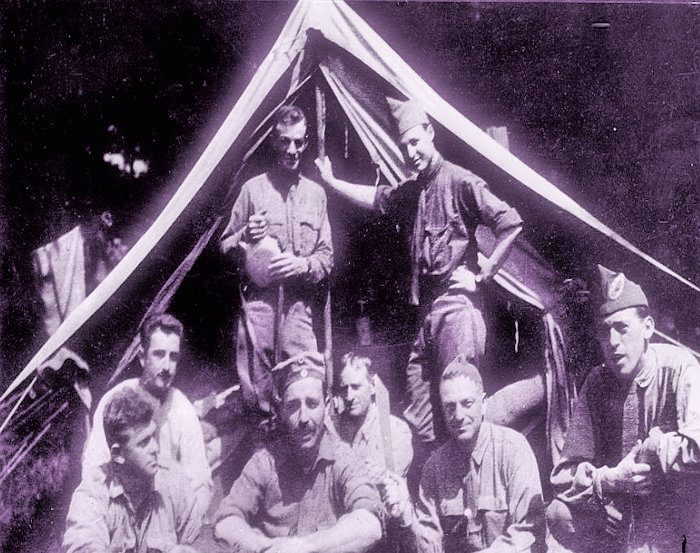
American Drivers from the Norton-Harjes Group
American war volunteering efforts in Europe began as soon as hostilities commenced in early
August 1914, centering in large part on ambulance and other medical relief initiatives in France. Most
of these efforts had an early association with the original American Hospital, founded four years
earlier in Neuilly in Paris. Members of the expatriate American business community and individuals
in and associated with the US embassy helped coordinate relief efforts and donated cars, money, and equipment.
In order to be able to treat battlefield wounded, a second institution, the American Ambulance
Hospital (or American Military Hospital) was established on 9 August 1914, also in Neuilly, at the
Lycée Pasteur. It had the backing of a number of prominent figures including Myron Herrick (1854-
1929), the US ambassador in the early months of the war; his wife Carolyn "Kitty" Herrick (1855-
1918); wealthy donors such as Anne Harriman Vanderbilt (1861-1940); and Herrick’s immediate
predecessor as ambassador, Robert Bacon (1860-1919). The hospital was soon treating wounded
soldiers ferried from the front during the First Battle of the Marne in early September. The work was
aided by volunteer ambulance drivers, often young Americans who found themselves in Europe at
the commencement of war; and it was in this direction of ambulance transport that relief efforts would increasingly focus.
In the latter part of 1914 and early 1915, three distinct ambulance units emerged: the Harjes
Formation or Morgan-Harjes Ambulance Corps founded by H. Herman Harjes (1872-1926), senior
partner of the Morgan-Harjes investment bank (an early French subsidiary of Morgan Stanley); the
American Volunteer Motor Ambulance Corps or "Anglo-American" Corps of the American
archaeologist Richard Norton (1872-1918); and the third, the American Ambulance Field Service,
later shortened (in summer 1916) to "American Field Service" or AFS.
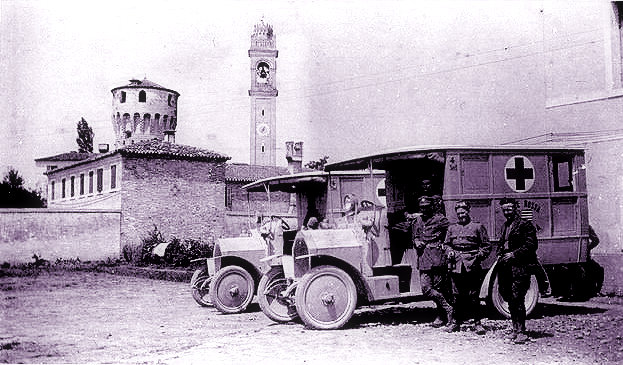
American Ambulances in Italy
In early October 1914 Harjes and his wife Frederica Berwind Harjes (1877?-1954), a member of the
American Ambulance Hospital board, set up a mobile field hospital comprising several surgeons,
orderlies, and drivers and set off to work in the Compiègne-Montdidier sector north of Paris,
providing medical assistance for the French army. Their work continued through the autumn and
winter of 1914-15 but increasingly, with more use by the French authorities of the mobile ambulance
aspect of their operation, the drivers and vehicles began to operate independently of the medical
facilities. In turn, more young American men were attracted to volunteer for work in this more active
role. Harjes dropped the hospital branch in mid-February 1915.
An element of ambulance duty that began to cause frustration for Harjes drivers and those of the
other corps now operating in the field was that the French Army was reluctant to allow the Americans
to operate in or from frontline postes de secours (advanced dressing stations), given their status as
nationals of a neutral power. The French feared that volunteers might harbor pro-German
sympathies. Instead, the drivers were restricted to more routine "jitney" work, ferrying the sick and
wounded from incoming sanitary trains to hospitals in rearguard towns and cities.
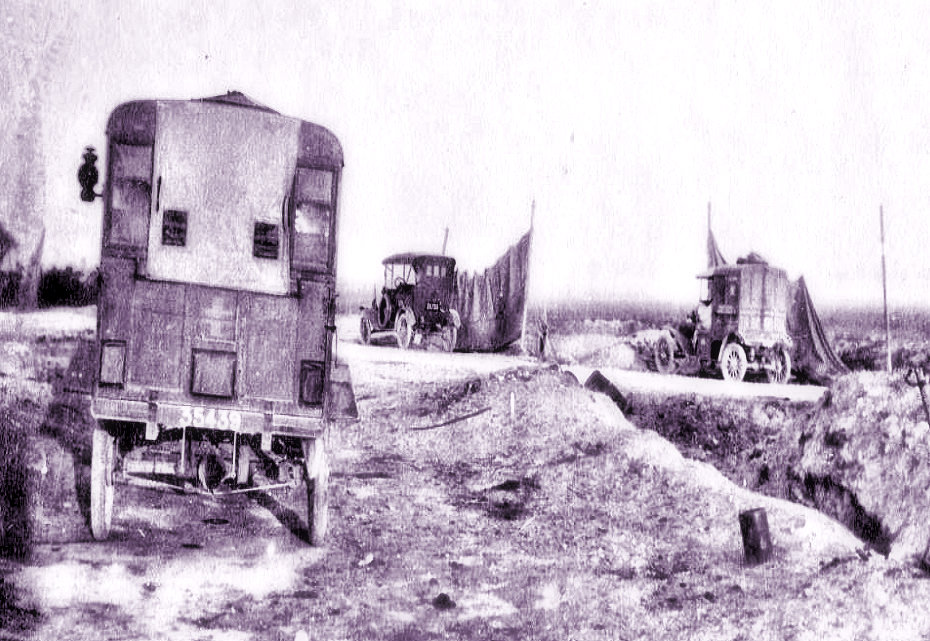
American Ambulances on the Champagne Battlefield
East of Reims
Richard Norton’s "Anglo-American" Corps began around the same time as Harjes and allied itself
with the British Red Cross (BRC) after the American Ambulance Hospital refused to sponsor it. The hospital was initially unwilling to develop a large ambulance wing. The BRC helped underwrite some
of Norton’s operating costs and used the corps to distribute supplies. Although technically attached
to the BRC in Boulogne, the corps carried out most of its work in the following months under the
auspices of the French Second Army some seventy miles to the south-east. Norton’s relationship
with the BRC was a strained one, with Norton finding his sponsor inflexible and administratively
cumbersome. By December 1915 he joined Harjes – who had begun such a relationship six months
earlier – in forging a link with the American (National) Red Cross (ANRC or ARC) instead. At the end
of 1916 the Harjes and Norton corps merged into one ambulance unit, the Norton-Harjes Formation
under the ARC banner.
Visit Our Daily Blog

Click on Image to Visit
|
|

Different Perspectives
The volunteer ambulance drivers of the First World War have a special place in literary history. As a group they were exceptionally highly educated and included many members who wrote well. As one of their members, Malcolm Cowley, put it, "The ambulance corps and the French military transport were college-extension courses for a generation of writers." Furthermore, many were idealists, looking to make a better world, who had their hopes shattered observing the carnage of the war firsthand. Consequently, they were well represented in the "Lost Generation" of the 1920s.
 Literary Ambulance Drivers
Literary Ambulance Drivers
 The American Volunteer Motor-Ambulance Corps: A Scholarly Assemblage
The American Volunteer Motor-Ambulance Corps: A Scholarly Assemblage
 World War One Diaries from the AFS Archives
World War One Diaries from the AFS Archives
 Rhymes of a Red Cross Man by Robert Service
Rhymes of a Red Cross Man by Robert Service
 A Wounded Ernest Hemingway Writes Home
A Wounded Ernest Hemingway Writes Home
 The Women Who Drove Ambulances on the Western Front
The Women Who Drove Ambulances on the Western Front
 Personal Letters of a Driver at the Front
Personal Letters of a Driver at the Front
 How Ambulance Drivers Hemingway and Dos Passos Rerouted the Course of American Literature
How Ambulance Drivers Hemingway and Dos Passos Rerouted the Course of American Literature
 Fany (First Aid Nursing Yeomanry) at the Western Front
Fany (First Aid Nursing Yeomanry) at the Western Front
 "Was It a Dream," by Driver Amos Wilder
"Was It a Dream," by Driver Amos Wilder
 Jerome K. Jerome on the Western Front
Jerome K. Jerome on the Western Front

Dear Family
When I come back to you some day, we shall feel a greater peace and sympathy for knowing that with the same eagerness, if in different ways, we have tried to serve and to save those men whose heroism makes our best effort seem a very small thing.
Letter, Leslie Buswell,
Ambulance No. 10

Driving Skill
The automobile was so new that many of the young men had to learn to drive before they could serve. "I'm going to France with the Norton-Harjes as soon as I can take a course in running a machine," wrote John Dos Passos in a personal letter.
(Firstworldwar.com)

Charles Nordhoff
Ambulance Driving Memories:
The first published work by ambulance driver/ aviator/ and author Charles Nordhoff was a war memoir title The Fledgling that focused on his days flying with Escadrille SPA 99 of the Lafayette Flying Corps. Some reflections on his earlier service as an ambulance driver with the American Field Service worked its way into the narrative:
I was on the road all day yesterday, afternoon and evening, getting back to the post at 10 P.M. One of the darkest nights I remember – absolutely impossible to move without an occasional clandestine flash of my torch. Far off to the right (twenty or thirty miles) a heavy bombardment was in progress, the guns making a steady rumble and mutter. I could see a continuous flicker on the horizon. The French batteries are so craftily hidden that I pass within a few yards of them without a suspicion. The other day I was rounding a familiar turn when suddenly, with a tremendous roar and concussion, a "380" went off close by. The little ambulance shied across the road and I nearly fell off the seat. Talk about "death pops"-these big guns give forth a sound that must be heard to be appreciated. . .
The siege warfare to which, owing to strategic reasons, we are reduced in our part of the lines, with both sides playing the part of besieged and besiegers, gives rise to a curious unwritten understanding between ourselves and the enemy. Take the hospital corps, their first-aid posts, and ambulances. The Germans must know perfectly well where the posts are, but they scarcely ever shell them-not from any humanitarian reason, but because if they did, the French would promptly blow theirs to pieces. It is a curious sensation to live in such a place, with the knowledge that this is the only reason you enjoy your comparative safety. Likewise our ambulances. I often go over a road in perfectly plain view of the Boche, only a few hundred yards distant, and though shells and shrapnel often come my way, I am confident none of them are aimed at me. The proof of it is that no one has ever taken a pot-shot at me with rifle or machine-gun, either one of which would be a sure thing at the range.
Source: The Fledging by Charles Nordhoff

Doughboys in the Meuse-Argonne

Detail, Lost Battalion Memorial
Charlevaux Mill, France
From: Lost Battalion Tours / Rob Laplander & Mike Cunha, Tour Leaders
When: 8-15 August 2020
Details: Download Flyer
HERE.
|

|
Part 2: The American Ambulance Field Service
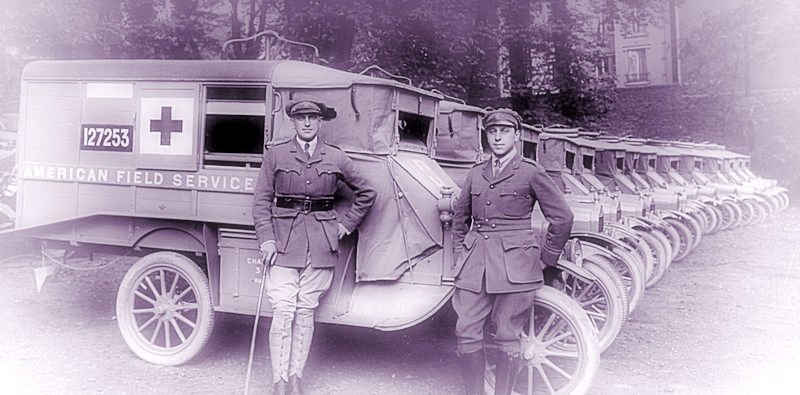
American Field Service Director A. Piatt Andrew and Future Director Stephen Galatti
The work of the American Field Service, meanwhile, grew more directly and organically out of the
American Ambulance Hospital in Neuilly. Differences remained between those on its board who
wished to concentrate on core hospital work and others who saw the practical value of a mobile
service. (The "Ambulance" in the hospital title had the association in France more akin to that of a
military hospital than an emergency vehicle.) But by late autumn 1914 its cars were allowed out into
the field to serve regional hospitals.
The AFS became the largest of the volunteer ambulance services, expanding rapidly with the arrival
at the turn of 1914/1915 of A. Piatt Andrew (1873-1936), a former assistant secretary of the U.S.
Treasury, who was to become the AFS director. Andrew extended the scope of his operation and
eventually separated completely from the Ambulance Hospital in 1916. He developed the role of all
the different volunteer corps in the field by persuading the French authorities in April 1915 to allow the volunteers of the three American services to function immediately behind frontline trenches in
battlefield areas.
As such, units of 25 to 30 men and some twenty ambulances were each assigned to
individual French divisions, becoming the divisions’ principal ambulance service. Separate camion
truck supply units were added, also manned by volunteers. They were to serve with the French
across the Western Front and, in the case of two units of the AFS, with the French Army of the
Orient in the Balkans.
A principal source of recruitment for the services came from American colleges, with east coast Ivy
League institutions such as Harvard, Yale, Princeton, Dartmouth, and Cornell well represented plus
west coast universities such as the University of California (Berkeley), and Stanford. The colleges alone
contributed some 1,855 men to the American Field Service, aided in the U.S. by the recruitment
efforts of Henry Sleeper (1878-1934), a friend of Piatt Andrew. AFS medical director Edmund Gros (1869-1942) also helped recruit AFS volunteers and others into the French legionnaire Lafayette
Escadrille and Lafayette Flying Corps.
Part 3: America Enters the War
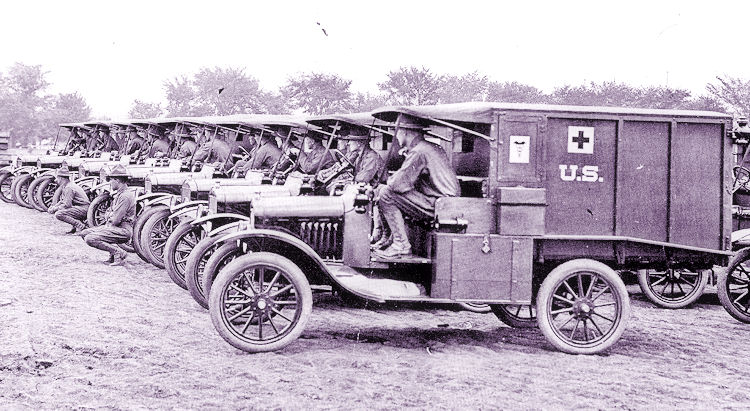
U.S. Army Ambulance Drivers in Training
The volunteers continued in service under their own auspices until the US entered the war in April
1917, when they were amalgamated in October 1917 into the United States Army Ambulance
Service (USAAS) and AEF Transportation Division. At the time of handover, the American Field
Service comprised 33 sections (34 at its peak) with some 1,200 ambulance
volunteers, almost 1,000 ambulances, 14 camion sections, and 800 camion drivers. The
combined Norton-Harjes Formation strength reached 13 sections, over 100 ambulances, and
200 men. Only around 500 volunteers transferred over to USAAS; however, the majority of them
from the AFS. Nearly 1,000 former AFS volunteers went on to serve in American Expeditionary
Force units, US Air Service, and US Navy, as well as French and British forces.
Leading the French military mission visit to the U.S. in May 1917, Marshal Joseph Joffre (1852-1931)
specifically highlighted the work and model of the volunteer ambulance services, identifying the
continued supply of ambulance units to the French army as a priority area. Mobilization by the US
Medical Department of the United States Army Ambulance Service was consequently swift and from
the outset continued the previous policy of accepting whole volunteer units raised by colleges, as
well as others raised by cities and corporations.
Recruiting Volunteer Ambulance Drivers
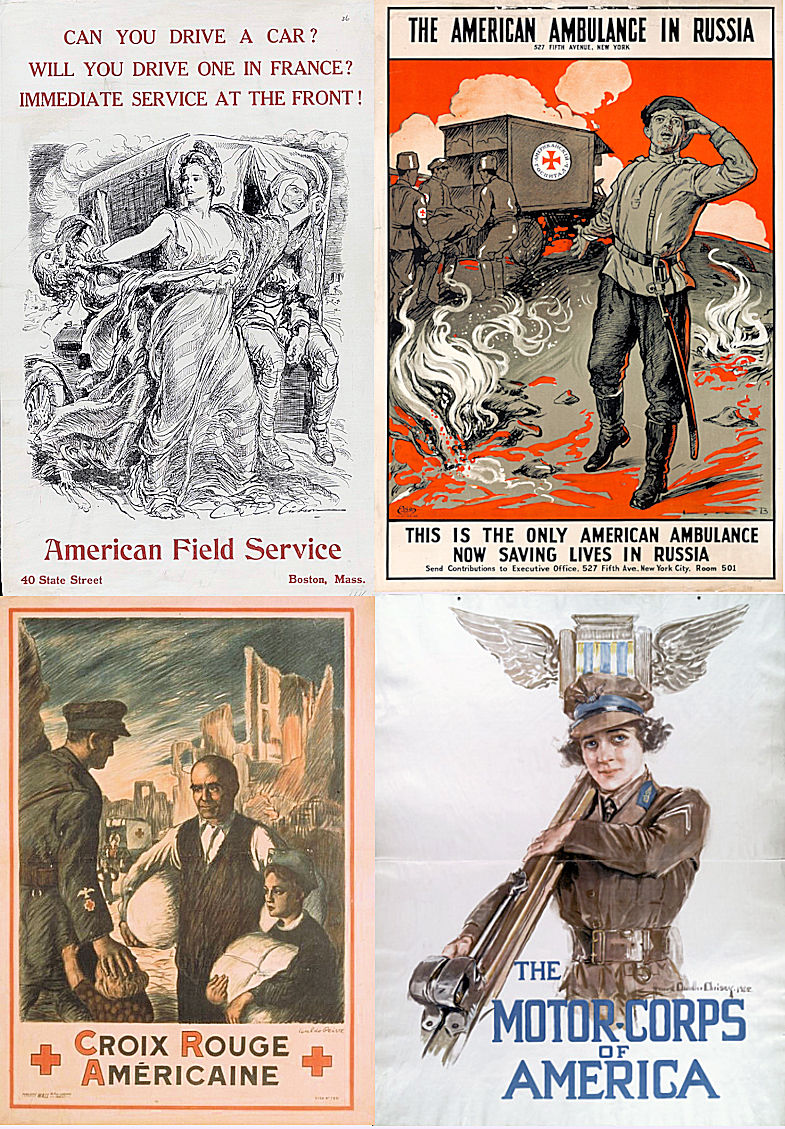
Volunteer James Rogers McConnell
Ambulance Driver & Aviator
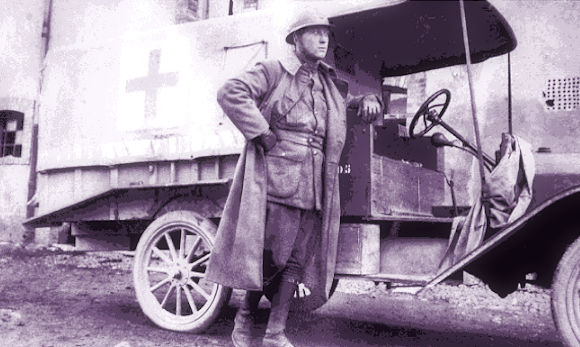
McConnell, American Field Service Driver
James Rogers McConnell was born in Chicago, Illinois, the son of a prominent judge, in 1887. The family later moved
to North Carolina. McConnell attended private schools throughout his childhood and went to college at the
University of Virginia. He attended law school briefly and then worked in several business ventures back home in North
Carolina.
A family friend described McConnell’s “adventurous spirit,” which led him to volunteer in 1915 for the American
Ambulance Field Service, a volunteer ambulance corps newly founded by Americans in Paris that same year (later
called the American Field Service or AFS). As an ambulance driver, McConnell gathered injured men from the
battlefield and brought them for treatment to military field hospitals. After bravely serving for a year, he earned the
distinguished Croix de Guerre medal from the French government for courage under fire.
Increasingly passionate about defending France, however, McConnell had begun to consider leaving the noncombatant ambulance service to enlist as a volunteer with the French military. The newly created Lafayette Escadrille provided him
the opportunity to do so.
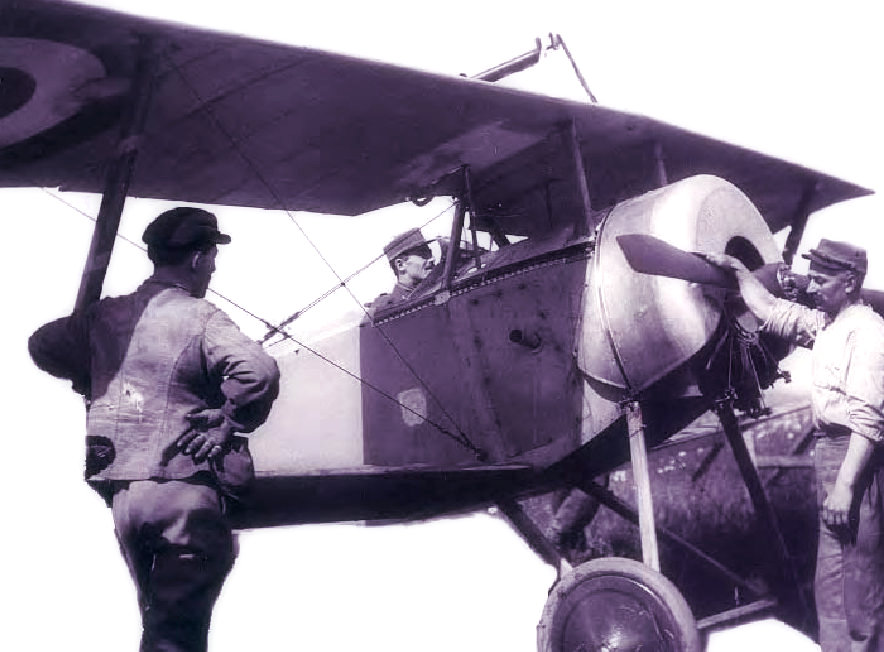
McConnell in the Cockpit of a Nieuport 11
The Lafayette Escadrille was a group of American pilots serving with the French Air Service (Aéronautique Militaire) prior to the entry of the United States into the war. Authorized by the French government in the spring of 1916, the group was named in honor of the Marquis de Lafayette, considered by many to be a French hero who helped win the war for the American colonists during the American
Revolution. The pilots wore fur-lined uniforms to keep
them warm in the fragile planes, often going out on two-hour
patrols.
Thirty-eight Americans served in the Lafayette Escadrille,
many of whom became famous on the home front for
their dangerous volunteer service. McConnell wrote a
book about his experiences during the war titled Flying
for France (1916); it helped Americans at home understand the
kind of service they were doing overseas on the side of
France and built support for the U.S. to enter the war.
Volunteering as a military pilot for France allowed
McConnell to take sides in what he saw as a righteous
cause. It also gave him the privilege of learning to fly. As
he wrote about flying for the French Air Service in his
book, “It was the beginning of a new existence, the entry
into an unknown world. . . For us all it contained unlimited
possibilities for initiative and service to France.”
Casualties in this type of volunteer service
skyrocketed during the war, as air-to-air combat
increased. McConnell’s plane was shot down
on 19 March 1917, during aerial combat with two
German planes. McConnell was killed just weeks
before his government joined the Allied cause in
Europe as a combatant nation.
Source: The Volunteers: Americans Join World War I, 1914-1919, AFS International
|
100 Years Ago:
France Enforces Its Mandate in Syria
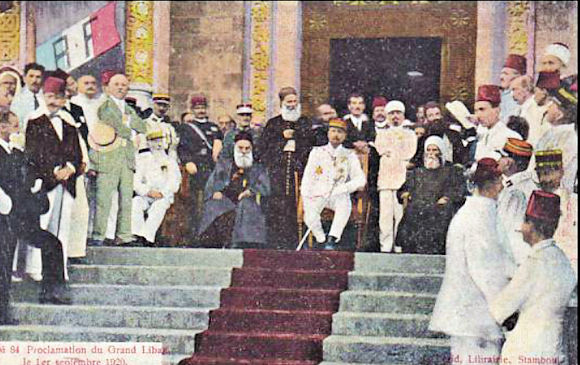
French Representative General Henri Gouraud Announces Creation of Lebanon As Independent Nation
In November 1918, Britain and France declared their intention of establishing in Syria and Iraq “national governments drawing their authority from the initiative and free choice of the native populations.” By the Sykes-Picot Agreement of 1916, France was to be free to establish its administration in Lebanon and on the coast and to provide advice and assistance to whatever regime existed in the interior. In March 1920 a Syrian Congress meeting in Damascus elected Faisal king of a united Syria including Palestine; but in April the Allied Conference of San Remo decided that both should be placed under the new mandate system and that France should have the mandate for Syria. In June 1920 a French ultimatum demanding Syrian recognition of the mandate was followed by a French occupation and the expulsion in July of Faisal.
The mandate placed on France the responsibility of creating and controlling an administration, of developing the resources of the country, and of preparing it for self-government. A number of local governments were set up: one for the Al-Anariyyah Mountains region, where the majority belonged to the Alawite sect, one for the Jabal al-Duruz region, where most of the inhabitants were Druze, and eventually one for the rest of Syria, with its capital at Damascus. The French mandatory administration carried out much constructive work. Roads were built; town planning was carried out and urban amenities were improved; land tenure was reformed in some districts; and agriculture was encouraged, particularly in the fertile Al-Jazirah. The University of Damascus was established, with its teaching being mainly in Arabic.
It was more difficult to prepare Syria for self-government because of the difference between French and Syrian concepts of what was implied. Most French officials and statesmen thought in terms of a long period of control. Further, they did not wish to hand over power to the Muslim majority in a way that might persuade their Christian protégés that they were giving up France’s traditional policy of protecting the Christians of the Levant.
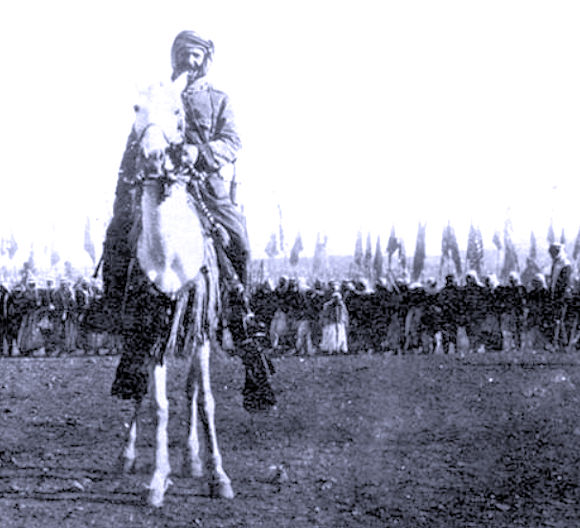
Druze Rebel Leader Sheikh Hilal al-Atrash, 1925
The first crisis in Franco-Syrian relations came in 1925 when a revolt in Jabal Al-Droze, sparked by local grievances, led to an alliance between the Druze rebels and the nationalists of Damascus, newly organized in the People’s Party. For a time the rebels controlled much of the countryside. In October 1925, bands entered the city of Damascus itself, and this led to a two-day bombardment by the French (see Druze revolt). The revolt did not subside completely until 1927, but even before the end of 1925, the French had started a policy of conciliation.
The administration of the region under the French was carried out through a number of different governments and territories, including the Syrian Federation (1922–24), the State of Syria (1924–30) and the Syrian Republic (1930–1958), as well as smaller states: the State of Greater Lebanon, the Alawite State, and Jabal Druze State. Hatay was annexed by Turkey in 1939. The French mandate lasted until 1943, when two independent countries emerged, Syria and Lebanon. French troops completely left Syria and Lebanon in 1946.
Sources: Encyclopedia Britannica Article; Wikipedia
|

Birmingham, Alabama, Doughboy Memorial
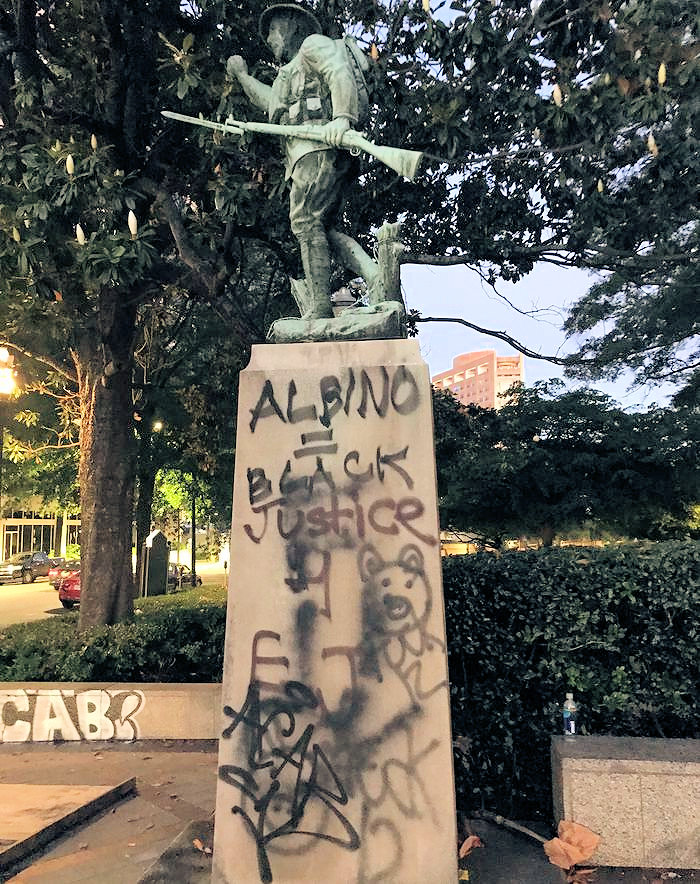
June 2020
|
Support Worldwar1.com's Free Publications
|
Order Our
WWI Musical CD
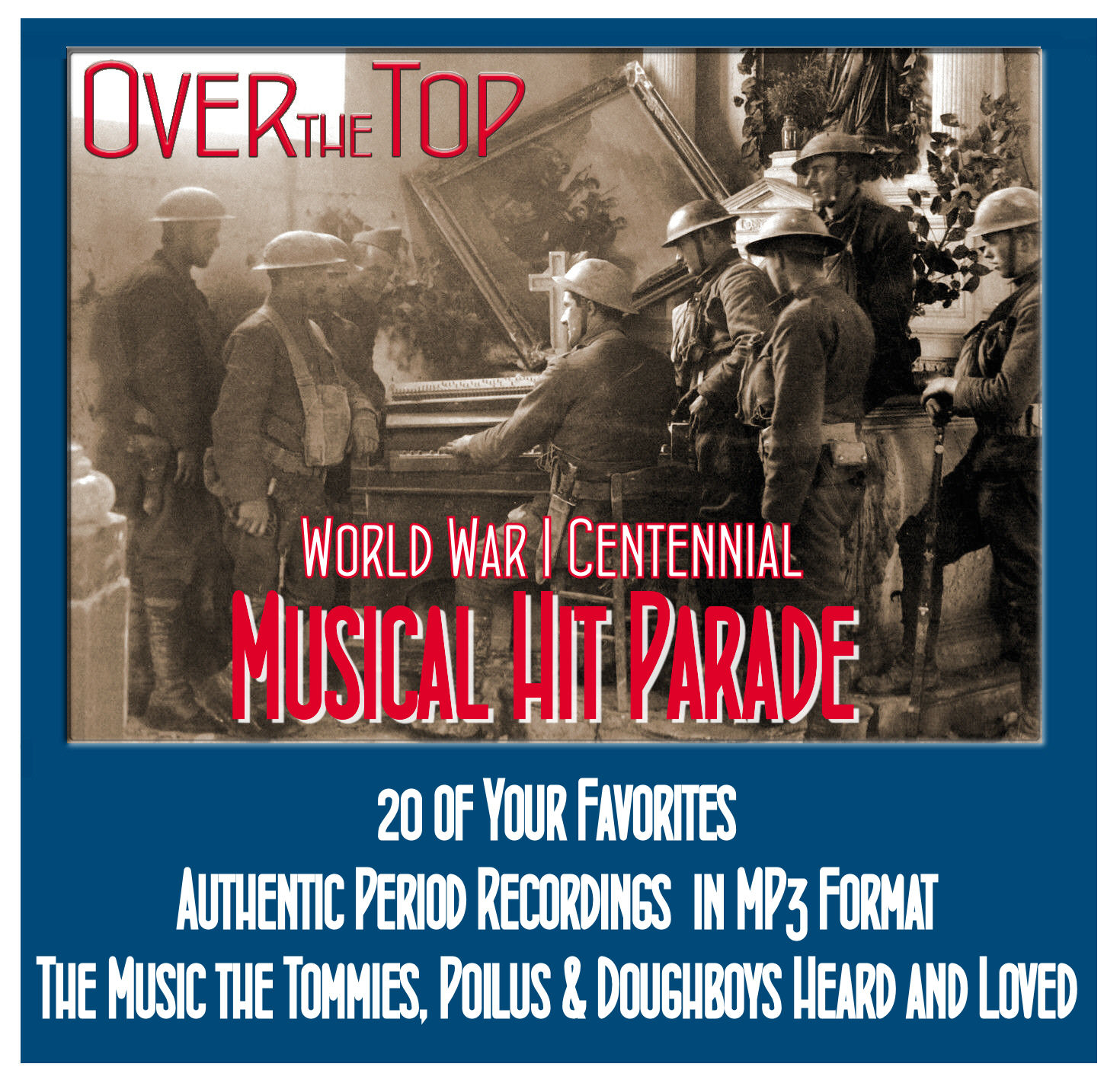
Click on Image for Information
|
Shop at
Amazon.com
|
Order the Complete Collection
Over the Top Magazine

Click on Image for Information
|
A World War One Film Classic
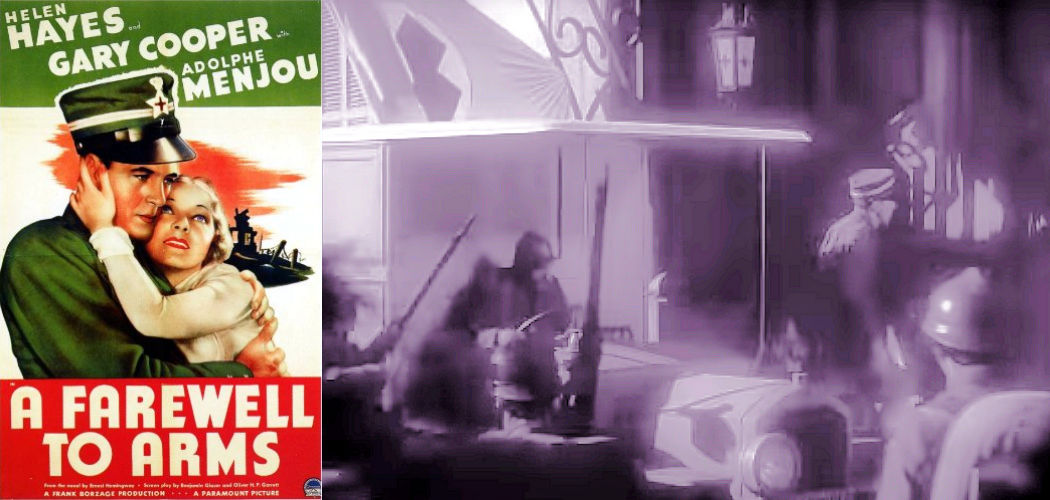
In 1932, A Farewell to Arms became the first Ernest Hemingway novel to make it to the silver screen. I read once that Hemingway disliked it as insufficiently pessimistic. Both my parents, who saw the film separately when it came out, thought it was a wonderful romance but not much of a war movie. Mom said, though, it was when she knew that Gary Cooper and Helen Hayes would both be big stars. The last time I viewed it, I found myself conceding that it is more a tragic love story than an exciting action tale. Yet, I still think it's a must-see for all World War One buffs. If nothing else, it helps in moving one's historical horizon beyond the Western Front. There WAS a big war going on in Italy at the same time.
Most likely our readers are familiar with the plot, which is set on the post-Caporetto Italian Front, along the Piave River where Hemingway himself was wounded. American ambulance section chief Lt. Frederic Henry (Cooper) encounters British nurse Catherine Barkley (Hayes) when he's drunk. Naturally, the first impressions are not good. However, fate intervenes. They meet up again on a blind date and the romance blossoms. It blossoms to the point that Catherine finds herself with child and is dispatched to distant Milan. Frederic, however, is subsequently wounded in action and finds himself cared for by Catherine at that very hospital in Milan. Complications and tragedy follow, but I'll leave it there.
Some notable attributes of the film are the Academy Award-winning cinematography, which was ground-breaking for the time (see the still above), and the well-played, heart-wrenching ending with both Cooper and Hayes at their dramatic best. Also deserving of a special mention is Adolph Menjou, who almost steals the early part of the movie as Frederic's cynical sometimes friend, sometimes manipulative supervisor Capt. Rinaldi. A Farewell to Arms is fairly easy to find. It's on Netflix as a DVD, Amazon Prime for streaming, and can even be found on some of those movie specialty networks that seem to be proliferating. By the way, the 1957 remake with Rock Hudson and Jennifer Jone has great mountain photography, but that's its sole merit.
|
|
Thanks to each and every one of you who has contributed material for this issue. Until our next issue, your editor, Mike Hanlon. |
|
 (Or send it to a friend)
(Or send it to a friend)
|
Design by Shannon Niel
Content © Michael E. Hanlon
|
























